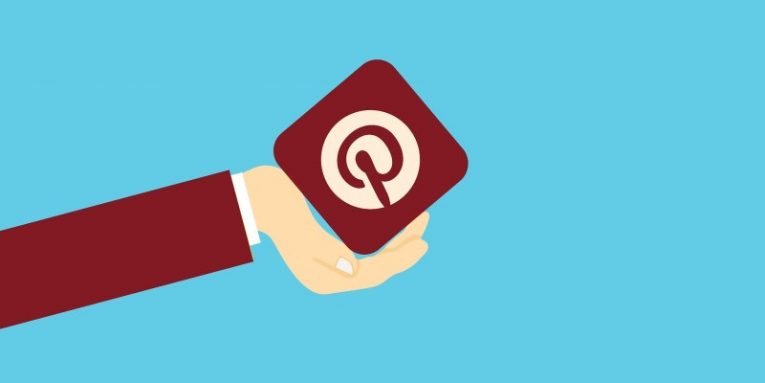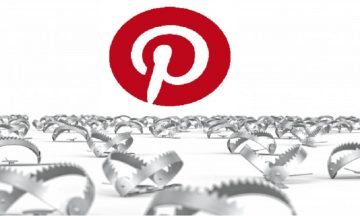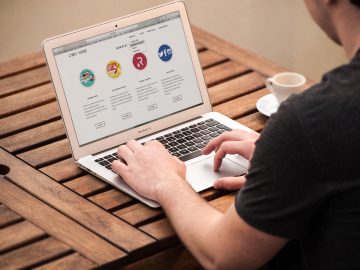With Pinterest's Growing Popularity, Hackers' Interest Grows as Well

Even if you do not use Pinterest on a daily basis, or hardly at all, you might have an account on this image-sharing, social-networking platform. Founded in 2009 in San Francisco, USA, it already has 367 million active users around the world. According to the statistics provided by the company, Pinterest is mainly used by women between ages 25-54, and in the USA, 83% of women in that age bracket use the platform. It is used by pinners (people who pin images on Pinterest) to plan birthday parties, dinner parties, weddings, baby showers, and other life events. Brands are using the platform to promote their products. Without a doubt, Pinterest is an important part of the virtual lives of many. Unfortunately, people continue to take the security of the platform and their accounts for granted. The truth if that with the growing popularity, cybercriminals’ interest is growing as well.
Table of Contents
Hackers are looking for Pinterest vulnerabilities
Pinterest is at the 15th position of the most popular social media platforms in the world, and it is in the 5th position of the most popular mobile social media platforms in the United States. It is no wonder that cybercriminals’ interest is peaking. So, what are the vulnerabilities that they could exploit to steal personal information, hijack your accounts, expose you to scams, and make you visit malicious websites? First of all, as you might know already, the company has gone through several major data breaches in the past. In 2012, for example, some users discovered their accounts locked due to “suspicious activity.” Later on, they were asked to change their Pinterest passwords. In this instance, the company failed to protect its users appropriately; however, it was quick to uncover suspicious activity and warn users about the breach. Hopefully, all victims changed their Pinterest passwords in the correct way (more on that, later), and hackers could not use the same data to take over other accounts. This is possible in those cases when people reuse the same password on multiple platforms.
In 2014, cybercriminals found a vulnerability within the platform itself, and they were able to use Pins (images on Pinterest) to expose people to scams. Pins representing alleged miracle weight-loss products would show up on the users’ feeds, and if they clicked them, they would be redirected to unreliable websites. Another ingenious vulnerability was used to hijack pinners’ Twitter accounts, which was then used to post misleading messages with links to the misleading Pins. Because anyone with an account can add images to the platform, it might be hard to control what kinds of links are hidden behind every pin. Therefore, users need to be mindful about the pins they interact with. Even if you just pin them to your boards without interacting with them further, your followers could click on the images and get trapped by scams. Do you want to be responsible for that? If you do not, pay attention to what you are pinning.
If you want to be cautious, pay attention to strange, out of the ordinary pins that do not really match your interests and searches. Also, it is a good idea to check the owner of the image. If they have thousands of followers with multiple boards that only have a few pins in them, there is a good chance that you have come across scammers/spammers. Also, watch out for pinners who are using the identities of well-known Pinterest users or even celebrities.
Take responsibility for your own security
You cannot protect Pinterest from data breaches. The company has to take care of that itself. You also might be unable to identify every fake pinner or every unreliable pin on the platform. Again, that is something that the company needs to take responsibility for, and they need to implement better screening systems to ensure that potentially dangerous content is blocked in time. That being said, you need to be cautious about how you conduct yourself and how you secure your own account too. Pinterest suggests paying attention to the emails that might warn you about suspicious activity and ask to reset passwords in case of detected breaches. Of course, keep in mind that phishing scams could be based on that too, and so you have to learn about how to identify misleading phishing emails.
How to secure Pinterest accounts?
Pinterest suggests adding extra security for every account. That includes updating the email address, enabling two-factor authentication, and also creating a strong Pinterest password. This is important unless you choose to connect your account to Google or Facebook, which eliminates the need for a unique Pinterest password. Adding a complex, unique, and strong password is one of the most important things when discussing how to secure Pinterest accounts. So, is your Pinterest password strong enough? You might think that it is, but creating an impenetrable password is often harder than people like to admit. First of all, if you have reused the same password (that includes passwords with slight modifications) at least once, you are already at risk. If your password contains words, guessable number combinations (e.g., date of birth), and are not long enough, they are weak as well. Without a doubt, this is not limited to your Pinterest password only. All passwords have to be strong, and the good news is that you do not need to take care of that yourself.
If you are wondering how to secure Pinterest accounts, we recommend that you, first and foremost, implement a trusted password manager to help you generate and protect your Pinterest password. Remember that it is not a good idea to write down the passwords you create on a piece of paper or a list them in a document file because that exposes them to potential theft. What you want is a dedicated password vault. Cyclonis Password Manager is a terrific choice because besides generating passwords, encrypting them, and also offering protection for other sensitive data (e.g., social security numbers or payment card numbers), it also can warn you if your passwords are no longer up to the required security standards. If you are ready to take care of your account, start by changing your Pinterest password.








